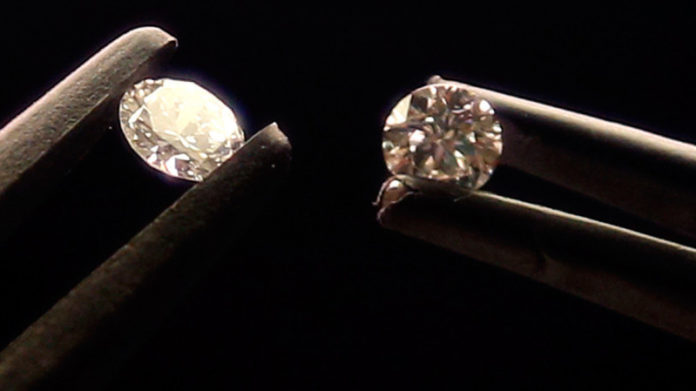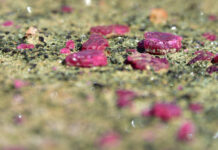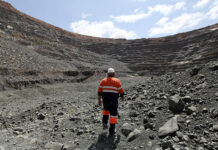
A tactic to corral the synthetic diamond jewellery market by De Beers – until recently the arch-enemy of man-made diamond jewellery posing as the real thing – seems a risk to some.
The group spent $140m in 2017 alone convincing us it’s only naturally occurring diamonds that properly do the job of: “I love you”. Anything else and you might as well be crossing your fingers behind your back .
Yet now we have ‘Lightbox’, De Beers synthetic diamond jewellery range. These are pieces ‘farmed’ in De Beers’ laboratories previously established to capitalise on demand for synthetic diamonds from industry where the interest was in preserving costs rather than life’s higher, more rarefied and (it would appear) more expensive pursuits.
The response has been mixed among diamond sector analysts.
“By launching Lightbox, De Beers has blurred the idea of real diamonds,” said Ya’akov Almor, a diamond consultant in an article produced by The Business Time, a UK publication. “When a consumer walks up to a Lightbox salesman and asks whether the diamonds are real, what will the answer be? The salesman will honestly say they are real diamonds but they are manufactured in a factory. They are, however, exactly the same as the product from a mine.”
“De Beers is known to be ahead of the game and brilliant in its marketing campaigns. This strategic move shows how serious the laboratory-grown diamonds threat is to the natural diamond industry,” said ABN AMRO, a Dutch bank with a long-standing history of providing credit to diamond polishers and manufacturers.
The view of Mark Cutifani, CEO of Anglo American, which has a controlling 85% stake in De Beers, is three-fold. Firstly, there’s margin to be had in the synthetic jewellery market where De Beers already has sunk costs through its Element Six industrial diamond facilities. Secondly, the jewellery will be marketed as ‘Lightbox’, not De Beers. Thirdly, the pieces on sale as ‘Lightbox’ will be targeted differently to traditional diamond jewellery pieces we’re accustomed to seeing as De Beers.
“We think there are very different markets and, in the end, we think they’re separate business opportunities,” says Cutifani. “The bigger the gap between the selling price [between De Beers diamond jewellery and Lightbox items], the happier we are, I guess, on the natural side. But we’re also looking at a margin on the lab-grown diamonds.
“A synthetic … that can make a 15% margin is a good return and, in our business, we are the most efficient makers of synthetic diamonds in the world.
“We’re the biggest and we’re the most efficient. We see a real market opportunity. We call them lab-grown diamonds, but it’s more costume jewellery; it’s more fun type jewellery. If I’m thinking about something for my daughters, synthetic diamonds would be ideal. For my wife, it’s the real thing. Period.” Synthetic diamonds will, in De Beers’ estimation, compete with coloured stones whereas diamonds are in a class on their own.
If I’m thinking about something for my daughters, synthetic diamonds would be ideal. For my wife, it’s the real thing. Period.
“By strengthening the appeal of natural stones to the consumer, while simultaneously flooding the synthetics market, De Beers will effectively address two of its most crucial strategic challenges with one stone,” says an analyst from a bank that is not permitted to speak to the media.
“In the end, the consumer is the winner because there will be affordable laboratory-grown diamonds on the market, which have the same beauty as a natural diamond,” said ABN AMRO. “The main question is if a consumer will in the end go for the beautiful, affordable and the more sustainable option, or the beautiful, rare, less affordable option?”










